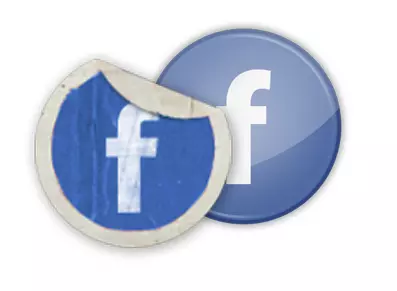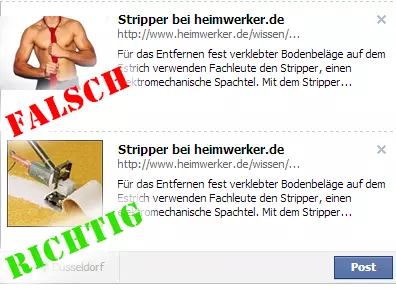
Change Facebook thumbnail

Often it is only noticed when sharing on Facebook or Google Plus if the meta data of a new article, such as the preview image, is not correct. Normally this is no big deal - title, description and the OpenGraph image (og:image) for the preview are quickly replaced.
But unfortunately you have to tell Facebook about these changes, which often stubbornly continues to show the wrong data.
Here we show how to bypass the Facebook cache and then share the current data and preview images.
Inappropriate metadata is often only noticed during sharing

Even in the best online editing, it can happen that the wrong images are selected for an article. During final editing via Page Preview, incorrect descriptions or inappropriate Open Graph images for the article preview are then easily overlooked.
In our example on the left, the image editor was obviously misled by the headline and selected an inappropriate thumbnail ;-) Many content management systems hide the meta data for the article in additional tabs. And even with WordPress, an unsuitable "article image" is often noticed much too late in edit mode.
Sometimes, however, simply the image format (aspect ratios) is incorrectly selected or should be adapted to the new dimensions for the Facebook timeline.
The error is often only noticed by the social media manager when he wants to share the page on the various services. Normally, it is also no problem to quickly correct the article preview image. Google Plus, for example, shows the corrected version almost immediately.
Wrong Facebook preview: Stubborn share cache
Only Facebook stubbornly refuses to exchange the adjusted image for the preview and continues to show the outdated image. The culprit is the share cache, where Facebook caches the data of a page after the first crawl. Unfortunately, no reloads will help here.
A simple method to work around the problem is to rename the page again. For older pages that are already in the search engine index, however, you should not change the URL without good reason. This would endanger existing rankings in the results pages.
Alternatively, it is possible to extend the URL by appending invented (or actually existing) parameters.
An example - this page address:
domain.com/articlepage.html
can be easily extended to:
domain.com/articlepage.html?fb=new
This already ensures that Facebook revisits and indexes the address variant.
A big disadvantage of this variant: The following Facebook Likes are stored under this address, not under the correct web address. Of course, it is better if all Likes under the official address are counted collectively.
Facebook debugging to the rescue
Therefore, the best method is to use the Facebook Developer debug tool.
Facebook Debugging to the rescue
Daher ist die beste Methode, das Debug-Tool der Facebook Developer einzusetzen.
https://developers.facebook.com/tools/debug/
An address entered on this page is immediately checked by Facebook using the "Get new scraping info" command, and all older versions of the page data are discarded as a result.
Unfortunately, the two tricks no longer affect images that have already been shared. The only thing that helps here is deleting the post. And a new post with the corrected data.
Why does the Facebook debugger ignore the replaced og:image share image?
Addendum 11/28/2017.
If the og:image has been replaced with the correct image and the debug page also correctly displays the new image as the share image, it can still happen that another image is still preferred as the preview image by Facebook.
One reason for this may be that the current og:image is too small. Currently (as of 2017), Facebook recommends 1,200×627 pixels as a size guideline for share images. As a minimum size, you should allow for a width of 470×246 pixels so that the preview image can be displayed across the full width.
Please feel free to share this article.
Comments
No comments yet.